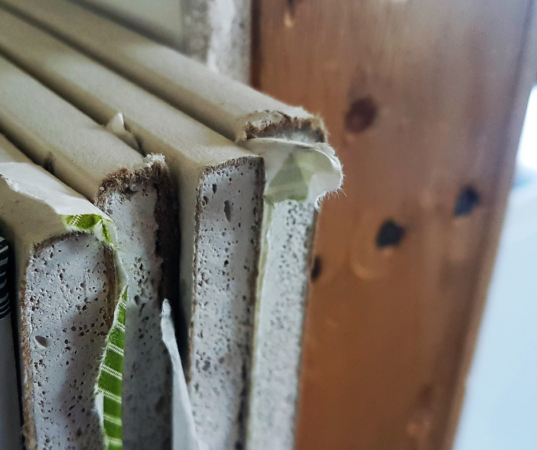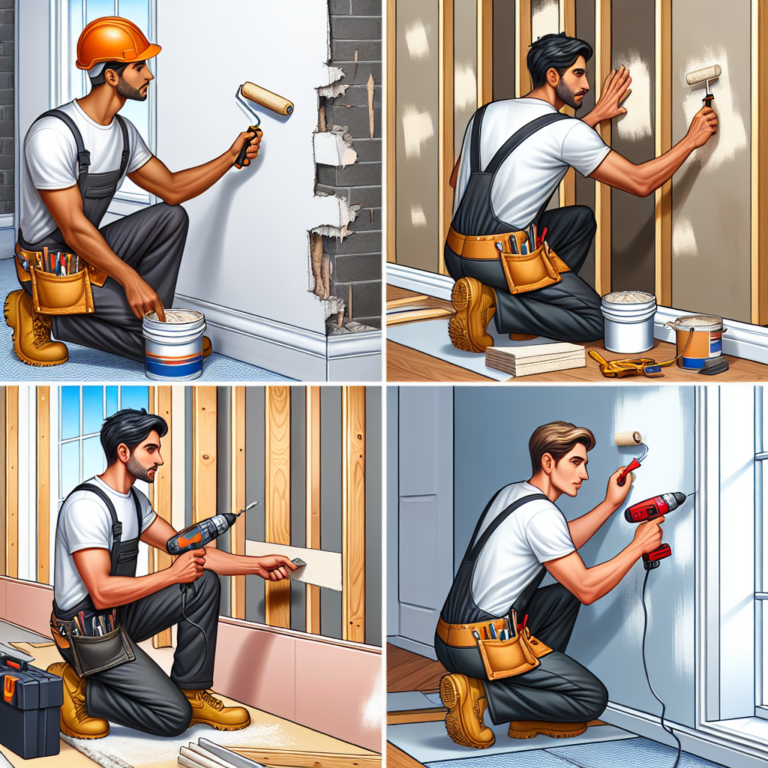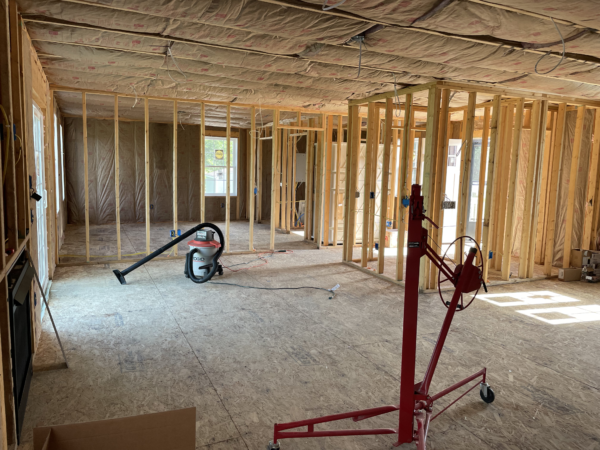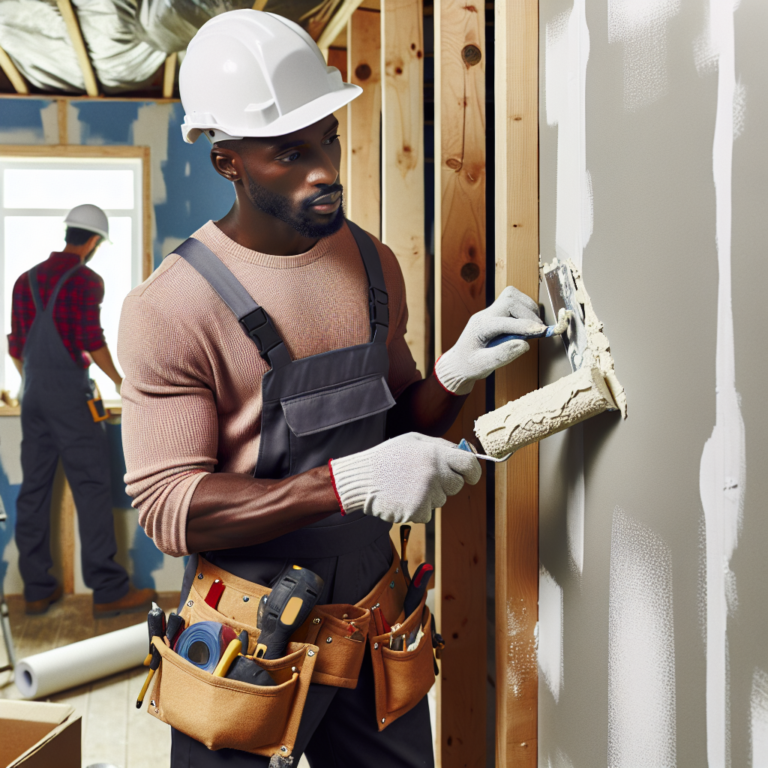Where Is Drywall Made?
Drywall, also known as wallboard or plasterboard, is a building material used for interior surfaces in a building structure. It is made from gypsum plaster, a type of processed gypsum. The gypsum plaster used to make drywall is nearly pure calcium sulfate. When it dries and hardens, it forms a stiff sheet of paper-like material that can be installed on walls and ceilings and fastened with nails or screws.
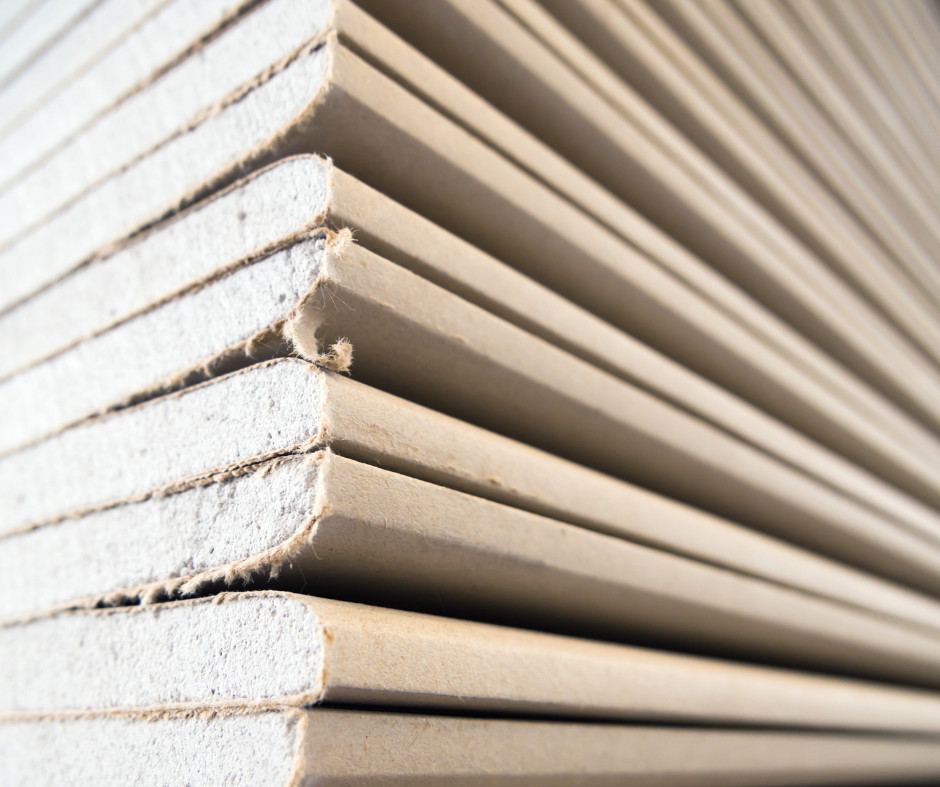
Making drywall involves mixing the gypsum plaster with water to create a thick paste. This paste is then pressed into molds to create drywall sheets ready for installation. These sheets are then cut to fit the area where they will be installed and joined together with aluminum tape and screws or nails.
The gypsum in drywall is mined from underground deposits called “gypsum beds.” Most of the world’s gypsum harvest comes from Spain, Turkey, and China. The U.S. mines about 15 percent of its own needs for gypsum, with other countries providing most of the rest. Drywall manufacturers are located worldwide, but most are based in North America and Europe. The U.S., Canada, and Mexico produce more than 80 percent of the drywall sold worldwide yearly.
Where Is Most Drywall Made?
The drywall industry is growing, and the United States is importing more than 70% of its drywall from China. China produces most drywall worldwide, with an estimated 90% market share. The country has been producing drywall for almost 50 years, and it has become a well-established industry there, with many companies specializing in manufacturing this product. Drywall is also produced in other countries worldwide, but China’s dominance means that most drywall comes from that country.
Which Company Produces Drywall in the USA?
Drywall is manufactured in the United States by the United States Gypsum Corporation (USG). USG has manufacturing facilities located throughout the country. The gypsum blocks are shipped to these locations and processed into drywall sheets. These sheets are then transported to various locations across the country, where they will be used in homes and businesses.
Is Chinese drywall still being sold in the USA?
China is the world’s largest drywall producer, but it has no longer been sold in the United States since the 2012 passage of the Drywall Safety Act. The legislation was enacted due to the high levels of dangerous sulfur in Chinese-manufactured drywall.
The sulfur in Chinese drywall has been linked to various health issues, including respiratory problems, headaches, sore throats, and skin irritations. In some cases, it has been discovered that Chinese drywall can produce hydrogen sulfide gas which can cause permanent damage to electrical wiring.
Chinese drywall was first introduced into the United States market around 2005 as part of an effort by manufacturers to cut costs. The lower cost of manufacturing combined with increased demand created an opportunity for manufacturers to sell their products at lower prices than other sources of drywall. This resulted in many homeowners choosing cheaper products over more expensive options because they could only tell the difference between them after they had been installed.
Was Chinese Drywall used in Arizona?
During the housing boom, Chinese drywall was used in Arizona and other parts of the country. The problem arose when builders used Chinese drywall to build homes, but it was discovered that the material contained high levels of sulfur. The sulfur then reacts with copper wiring and pipes, causing corrosion, foul odors, and health problems for homeowners.
Homeowners have filed lawsuits against builders, contractors, and suppliers who sold them Chinese drywall. Some of these lawsuits have been settled out of court, while others are still pending.
Conclusion
Drywall is a manufacturing term that refers to the final stage of producing gypsum boards. Manufacturers ship drywall to distributors who, in turn, sell it to building and construction supply centers, hardware stores, and lumber yards. Drywall manufacturers produce about 15 million tons each year, shipping this material by road and rail to markets all over the United States.

